You can test your handmade soap's pH using five reliable methods. Try pH strips for quick results by pressing them against lathered soap. Use the phenolphthalein drop method for laboratory-grade precision. Digital pH meters offer highly accurate readings with instant results. The traditional tongue test detects active lye but should only be used by experienced soapmakers. Wait 24-48 hours after saponification for the most accurate measurements. The right pH testing method guarantees your soap is safe for skin.
5 Ways to Ph Test Fresh Handmade Soap
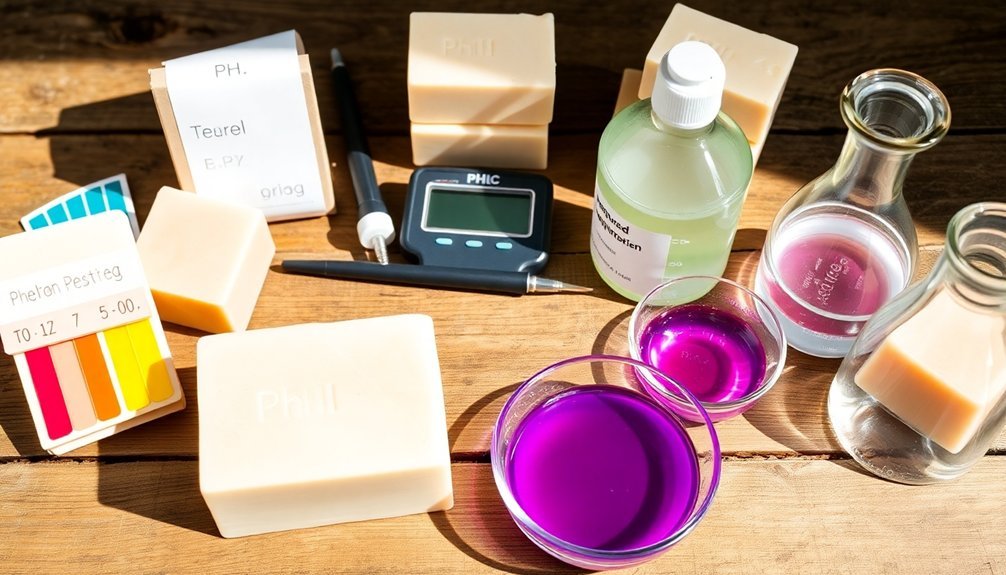
Testing the pH of your fresh handmade soap is essential for safety and quality. Your handmade soap should have pH levels between 7 and 10, with 7 being neutral pH. Anything higher might indicate lye heavy soap that could irritate skin.
The most reliable method is using pH strips. Simply create lather from your soap and touch the strip to the bubbles, then compare the resulting color to the color chart provided with your strips. For more precise results, make a 1% solution by dissolving 1g of soap in 99g of distilled water before testing.
Experienced soap making artisans might use the tongue test, but this isn't recommended for beginners.
Alternatively, observe how the soap feels during washing—smooth soap rinses easily while lye heavy formulations feel slimy or don't rinse well.
Using Ph Strips for Immediate Results
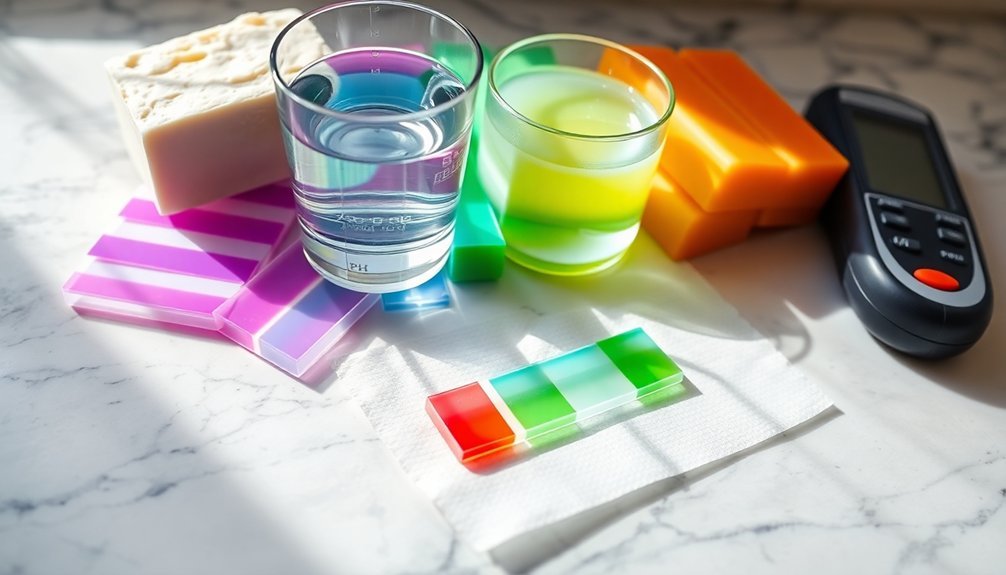
pH strips offer the fastest and most reliable way to check your soap's pH without specialized equipment.
When making homemade soap, you'll want to guarantee your creation falls within the safe pH range of 7-10. Any reading above 10 indicates excess lye that could irritate skin.
To perform your pH test:
- Create a solution by lathering a small soap sample in distilled water until you've produced a sudsy mixture.
- Press your pH test strips against the wet, lathered soap and hold for a few seconds while the chemical reaction occurs.
- Match the resulting color change to the provided chart for an accurate pH reading.
Always wait at least 24-48 hours after saponification before testing to allow your soap's pH to stabilize properly.
The Phenolphthalein Drop Method for Precision
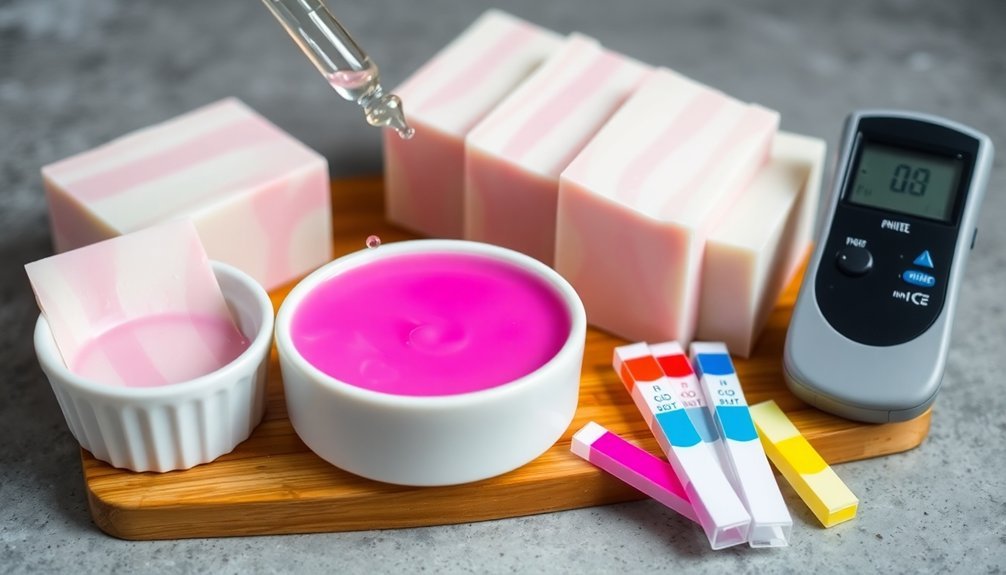
For soapmakers seeking laboratory-grade precision, the phenolphthalein drop method offers a reliable alternative to pH strips. This technique provides a clear visual indication of your soap's alkalinity through a simple color change.
To use this method, create a 1% soap solution by mixing 1g of soap with 99g of distilled water. Add a few drops of phenolphthalein solution to your mixture and observe. If your soap is alkaline (pH above 8), the solution will turn pink. If it remains colorless, your soap is neutral to acidic.
This testing approach excels where pH strips might fall short, giving you a more accurate assessment of lye-heavy soap that could irritate skin.
You'll appreciate the scientific precision, especially if you're comfortable with colorimetric analysis in your soapmaking routine.
Digital Ph Meters: High-Tech Testing for Soapmakers
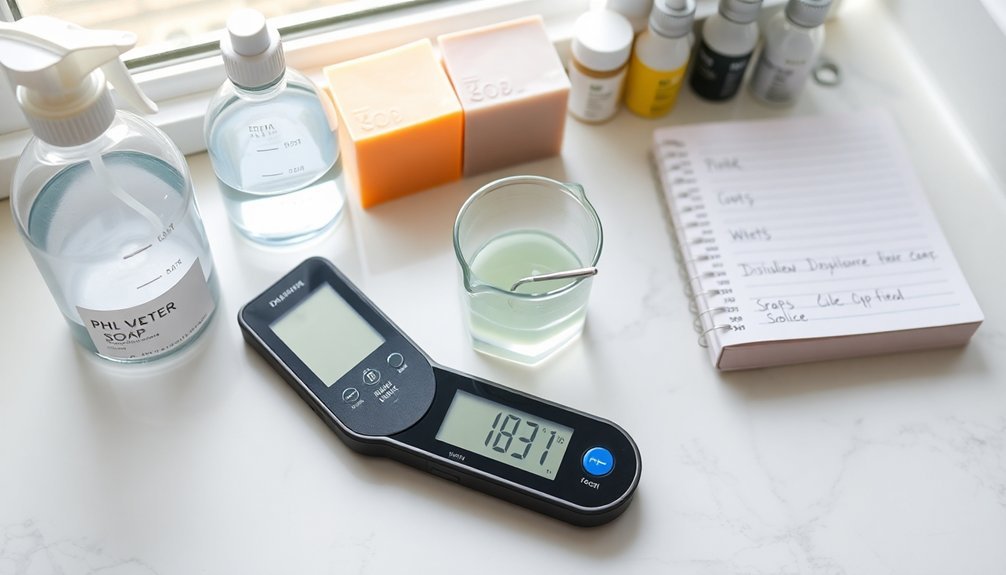
Modern soapmakers have embraced digital pH meters as the gold standard for precision testing. These devices provide exceptionally accurate measurements within ±0.01 pH units, ensuring your soap meets safety standards while maintaining quality control.
Before testing, you'll need to calibrate your meter with standard buffer solutions to guarantee reliable results across different batches.
Three key advantages of digital pH meters:
- Instant results – Get precise pH levels in seconds instead of waiting for color changes
- Temperature compensation – Accurate readings regardless of your soap's temperature
- Consistency tracking – Document exact values for replicating successful formulations
With digital testing, you're investing in both efficiency and precision. The immediate feedback helps you adjust formulations quickly while ensuring your products consistently fall within the ideal 7-10 pH range for safe, quality soap.
The Traditional Tongue Test (For Experienced Makers Only)
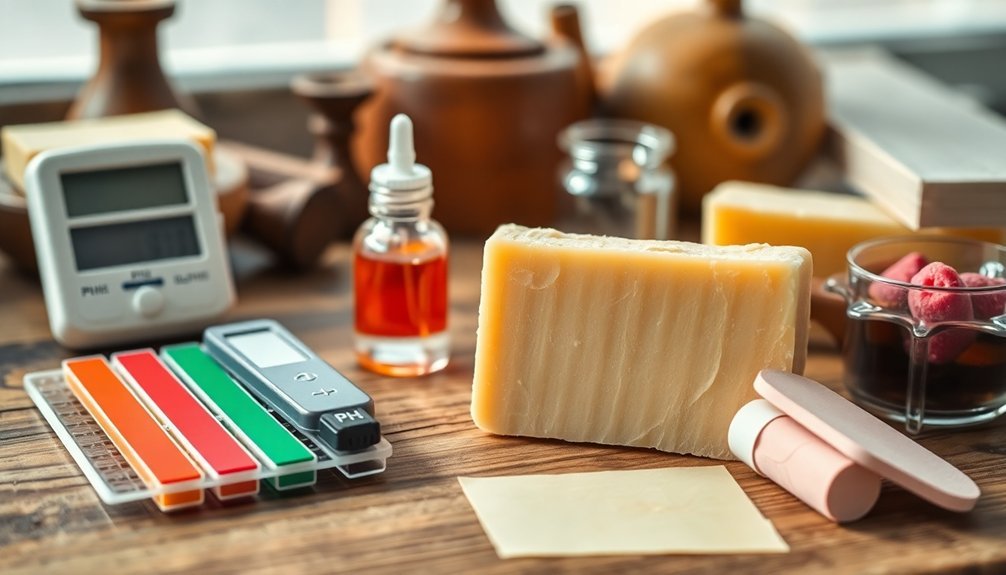
Before digital meters dominated the soapmaking scene, veteran artisans relied on a controversial method: the tongue test. Also known as zap testing, this approach involves touching a tiny soap amount to your tongue to detect active lye through a tingling sensation.
If you feel a "zap," your soap is likely lye-heavy and unsafe for use. A smooth, neutral feeling suggests a properly saponified product. However, this traditional tongue test isn't scientifically accurate for pH assessment and poses significant safety risks, especially for beginners.
Only attempt this method if you're highly experienced and familiar with your recipes. Even then, remember that it's not considered good manufacturing practice due to hygiene concerns and potential injury.
While historically significant, this subjective technique has largely been replaced by more reliable testing methods.
Frequently Asked Questions
How to Test Ph Levels in Homemade Soap?
You'll need to create a 1% soap solution by mixing 1g soap with 99g distilled water. Use liquid-specific pH strips, testing 24-48 hours after saponification. Aim for a pH between 7-10 for safe use.
How Do You Make Homemade Ph Test?
You can make a homemade pH test using red cabbage juice, which changes color based on acidity. Boil cabbage, strain the liquid, and dip paper strips in it to create your own pH indicators.
How Do You Test Ph in Saponification?
To test pH in saponification, let your soap cure for 24-48 hours, then create a 1% solution with distilled water. Use pH strips or a calibrated meter to measure the pH, which should be 7-10.
How to Know if a Soap Is Ph Neutral?
You'll know your soap is pH neutral if it tests at around 7 on a pH scale. Use pH strips or a digital meter after curing. Truly neutral soap is rare—most handmade soaps range from 8-10.
In Summary
You've now explored five reliable ways to test your handmade soap's pH. Whether you're using simple pH strips, precise phenolphthalein drops, a digital meter, or the traditional tongue test, you'll be able to confirm your soap's safety. Remember, properly cured soap should fall between 8-10 on the pH scale. Test consistently, keep records, and you'll gain confidence in your soapmaking skills while ensuring quality products for yourself and others.
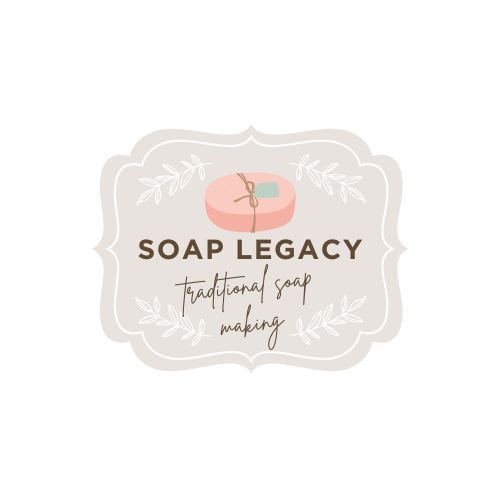
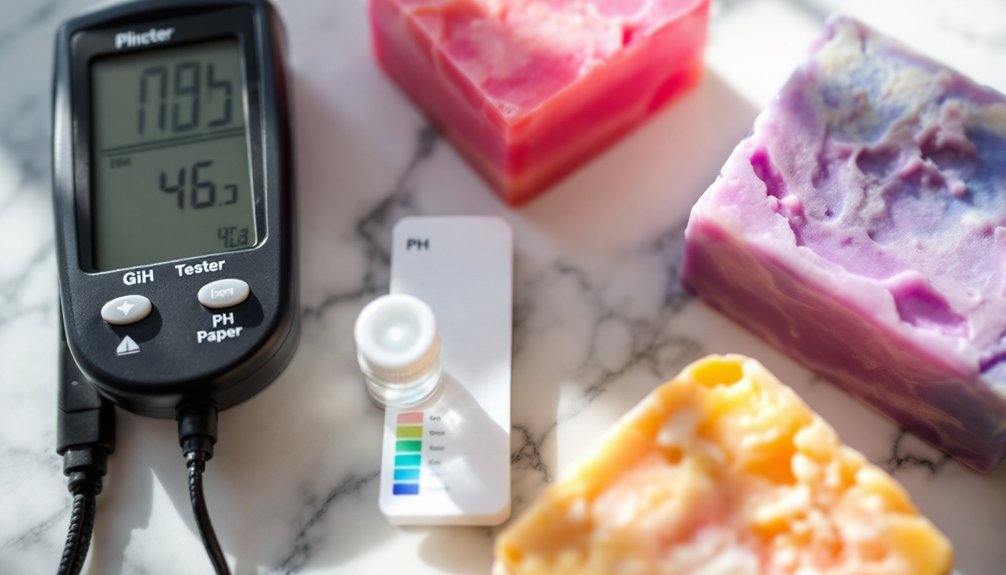
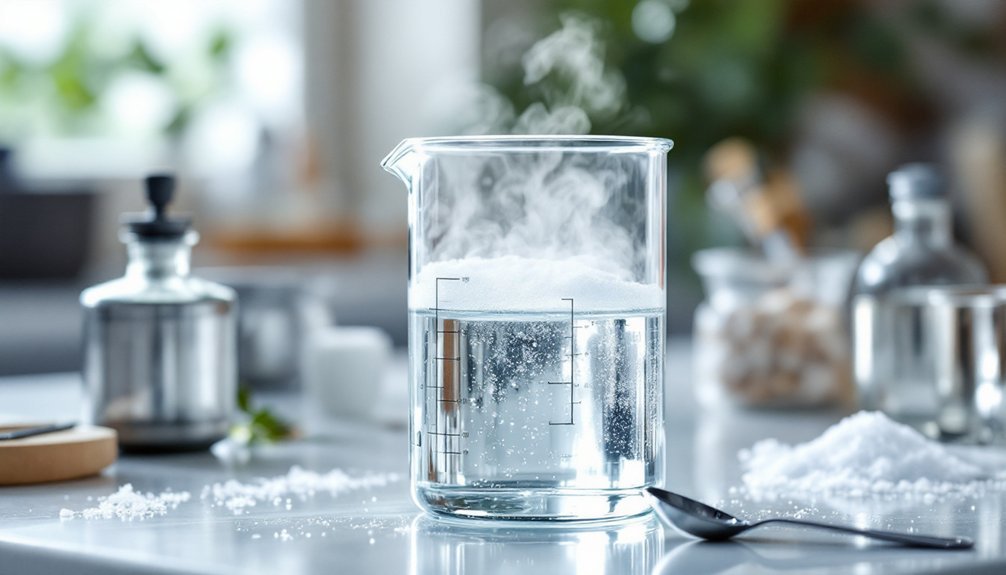
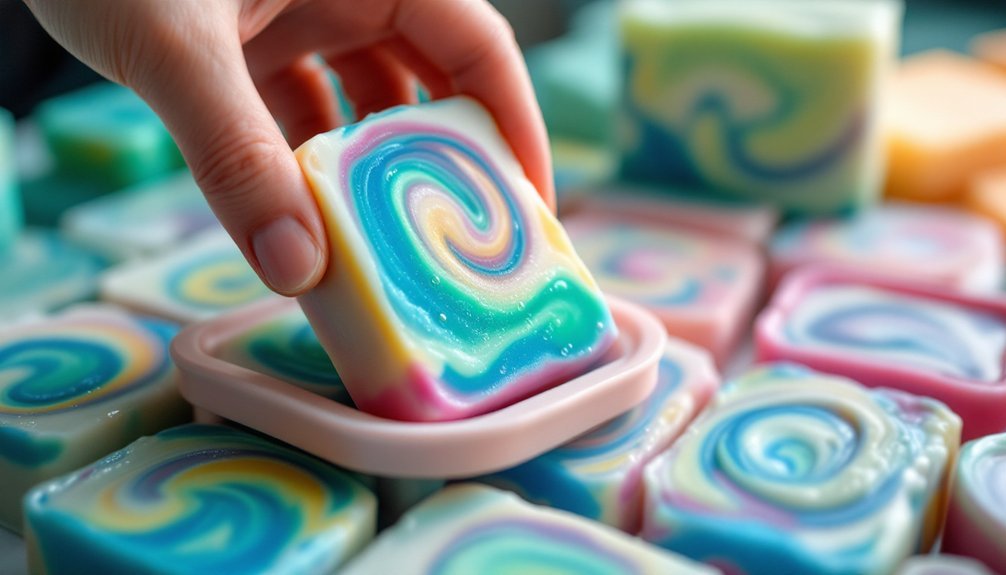

Leave a Reply